During the 1993 Beijing Olympics, cordyceps sinensis made worldwide headlines after several Chinese runners attributed their success in crushing several world records to eating cordyceps mushrooms.
The mushroom became a phenomenon–so much so that it became an endangered fungus. It shares several characteristics to cordyceps militaris, and their benefits and differences are widely discussed.
Today, the curious mushroom has spawned a renewed interest for its medicinal properties.
What are cordyceps mushrooms?Cordyceps mushrooms are a type of functional medicinal mushroom that have hundreds of subspecies. The most popular variants are cordyceps sinensis and cordyceps militaris.
Both offer several health benefits and can be found and used as a supplement. It’s actually not technically a mushroom but is still classified as one due to its uses that are similar to mushrooms, and its properties.
How are they grown?
Cordyceps in nature are found growing on insects. A parasitic fungus, cordyceps infect their host and eventually kill it in order to consume the host’s body.
Once that has happened, a mushroom is sprouted from the host’s head where spores are released.
These spores begin the mushroom cycle, where it will be repeated over and over again with another host.
Thankfully, cordyceps only feast on insects and not humans. For now!
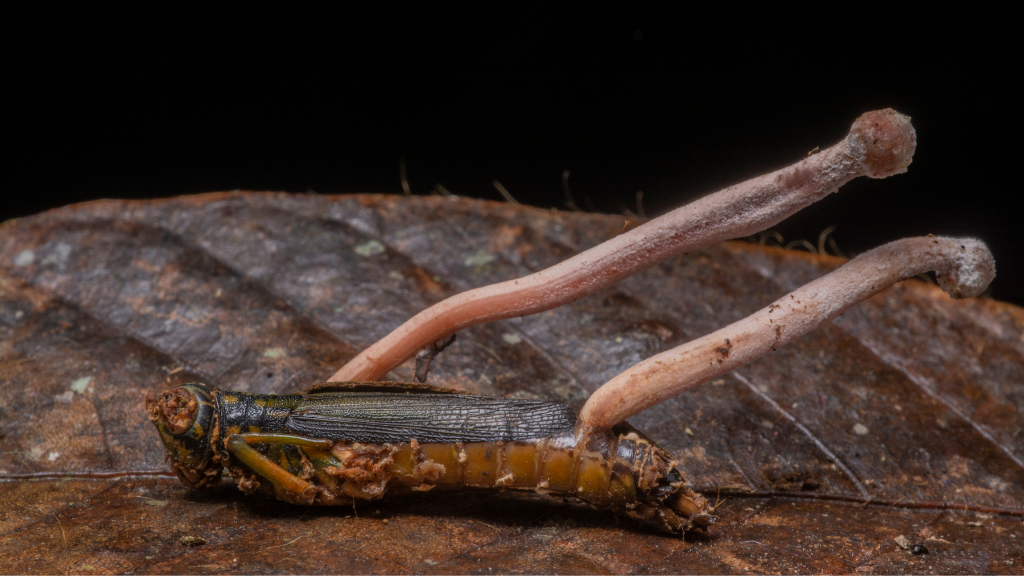
Because cordyceps blew up in popularity, it’s possible to cultivate them and grow them in a controlled environment.
Cordyceps militaris has been commercially cultivated since the 1980s, but not until 2018 in the United States. Although possible to grow yourself and cultivate, cordyceps are tricky and picky eaters–they only target ghost moth caterpillars in the Himalayas.
Frequently grown in glass jars or plastic bins, commercially cultivated cordyceps require a recipe in order to grow properly. Different growers have different formulas and switch up the nutrient broth to adjust the moisture or pH. The mushrooms mature into their fleshy state, and are what is most commonly found in supplements.
Wild cordyceps are rare, and the high demand has created limited availability. Supplements claiming to have wild cordyceps sinensis will likely only have trace amounts. Vegan? Not a problem–no ghost moth caterpillars are harmed when growing cordyceps commercially.
How many types of cordyceps are there?
There are over 750 different species of cordyceps that grow all over the world, which are categorized into a variety of families with varying names. From the colorful cordyceps militaris to the dark and tough ophiocordycipitaceae, there are hundreds of genuses that make up this fascinating mushroom.
There are two main species that reign over the rest of the cordyceps which are cordyceps militaris and cordyceps sinensis.
They are what are mainly used in supplements and supplement powders and in herbalism and are popular due to their health benefits. While use and cultivation is rather new in the United States, this wonderful mushroom has been used and studied for centuries.
>> Looking for some of the best cordyceps tincture brands? Check out this article.
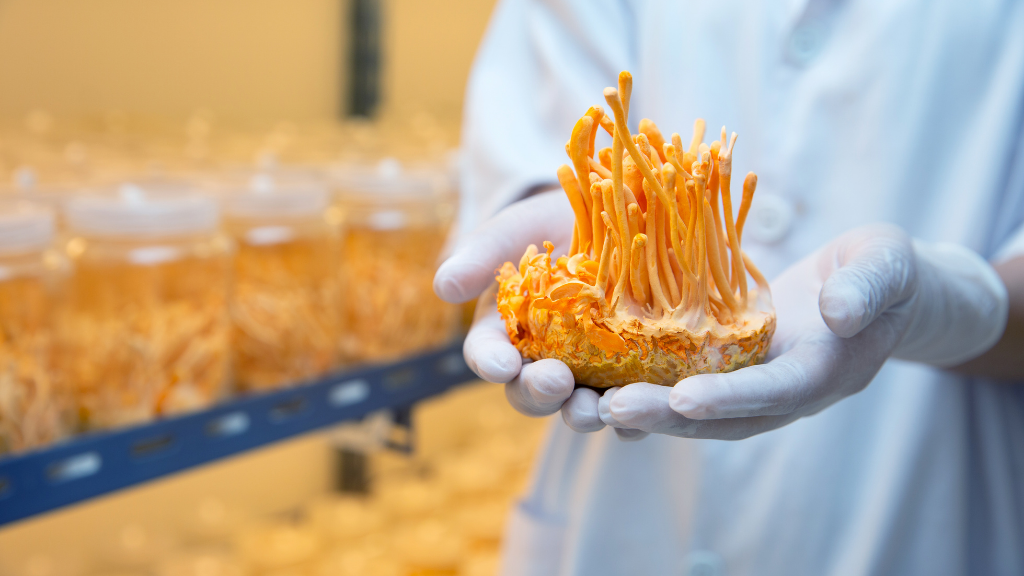
A brief history of cordyceps
Cordyceps mushrooms documentation in China and Tibet dates back to 1694. Wild cordyceps sinensis thrives in the harsh environments of Tibet, India, Nepal, China, and Bhutan.
Its population in the wild has drastically diminished due to the increasing demand for supplements and for nutritional uses.
The cordyceps militaris mushroom grows in the wild in both the United States and in Europe, and feasts on moth and butterfly larvae.
Cordyceps militaris is much easier to grow because it’s saprophytic (it has the ability to grow on other matters such as wood) and is not just parasitic. It contains more cordycepin than any other species and contains anti-cancer, anti-inflammatory, and antioxidant properties.
The phenomenon from the 1993 Beijing Olympics sparked a worldwide interest in cordyceps, which has included additional research and integrating it into products. Not all cordyceps are grown the same, and you must be careful about which supplements you purchase: cordyceps grown on grain are often primarily grain with very little of the mushroom itself.
Supplements aren’t regulated to the same standards as drugs are, so it’s much easier for companies to mislead consumers with their products.
Cordyceps are lauded for their various benefits and uses, such as supporting your immune system, metabolic health, promoting recovery and endurance, and more.
In traditional Chinese medicine, cordyceps are used to treat asthma, increase energy, and even to improve sexual function. It’s no wonder this mushroom is highly sought after!
>> Looking for more about the potential health benefits of cordyceps? Check out this article.
What is cordyceps militaris?
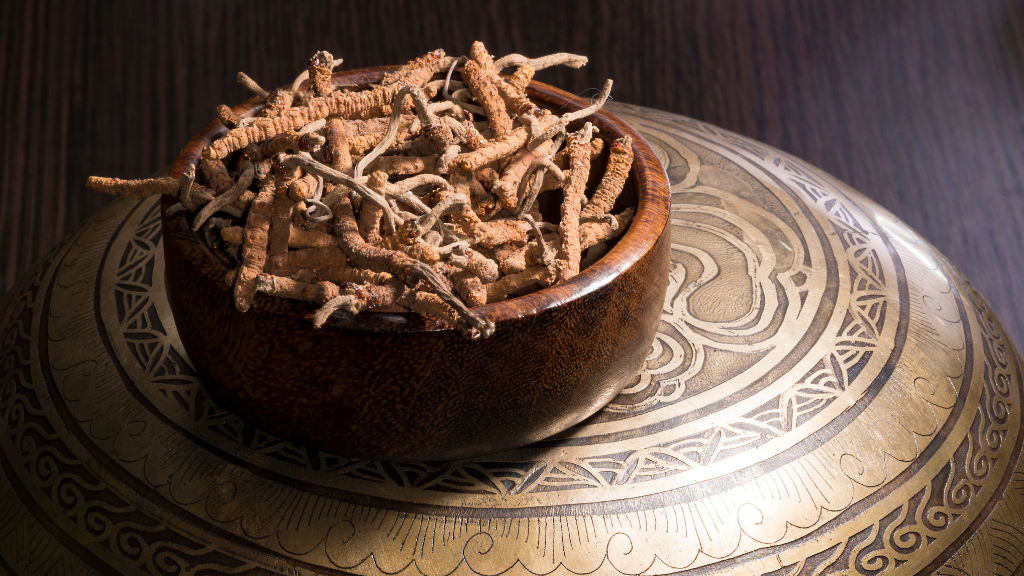
This species of cordyceps is believed to have stronger anti-aging, antiviral, anti-fungal properties and more because it contains more cordycepin, a biological compound, as confirmed by several studies.
Very similar to cordyceps sinensis, militaris is more common since it’s easier to grow in a controlled environment by professional and aspiring growers. It’s produced at a much higher quantity and cheaper to purchase because of its availability.
Cordyceps militaris is grown in labs where the mycelial extracts are planted on wood or grain. It generally has the same benefits as sinensis, making it a great alternative to the expensive cordyceps sinensis.
What is cordyceps sinensis?
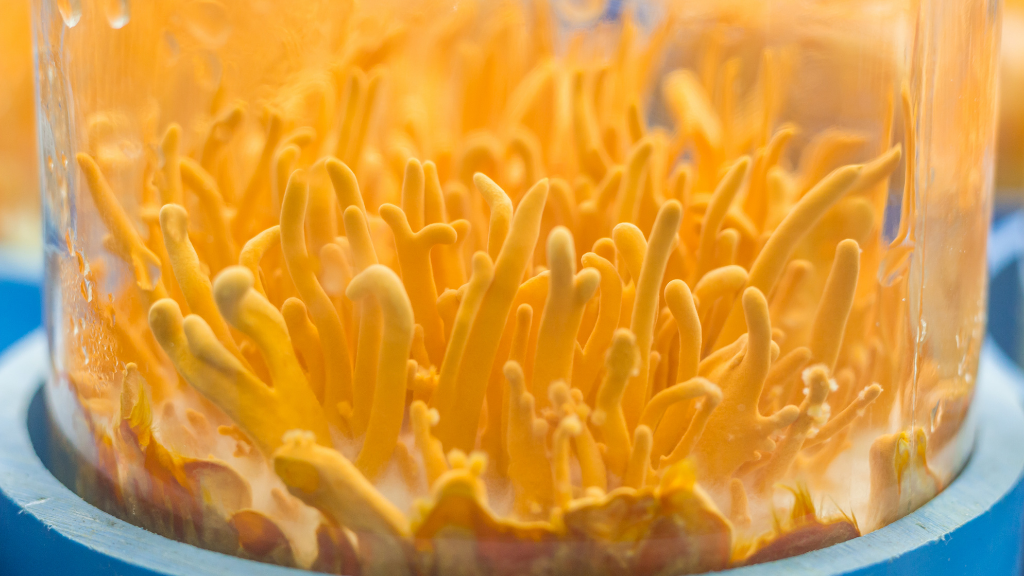
Cordyceps sinensis on the other hand is only found in the wild–the aforementioned wilderness of the Himalayas via ghost moth larva, after they’ve been devoured by the mushroom to grow more spores. This makes it extremely costly and difficult to cultivate, so it’s unlikely that the supplement label claiming to have sinensis actually has enough for the medical claims, or it’s tainted with additional ingredients.
Current research has shown that there is a diverse number of symbiotic species living together, so the mushroom is now known as ophiocordyceps sinensis.
There are other strains as well, and the research is ongoing regarding different strains and health benefits. Both strains of mushrooms contain amino acids and bioactive components such as GABA and ergothioneine, and an anti-fatigue affect that is increasingly appealing to athletes.
At this point in time it’s unclear whether sinensis has more cordycepin in nature than militaris does, but the research is ongoing.
Why is cordyceps militaris more popular on shelves?
Unsurprisingly, cordyceps militaris is much more popular than its close relative, the sinensis mushroom. From an economical standpoint, the strain that is most abundant is the most available. The price of cordyceps sinensis has skyrocketed because of its picky nature so naturally, miliratis has become the staple.
With improving cultivating techniques, products containing cordyceps are increasing in quality. Cordyceps militaris is much easier to grow in a lab, which allows opportunities to experiment with different growing conditions and determine optimal harvest windows.
Additionally, because this is such a popular strain of mushroom, ongoing research is optimal and unless you have some serious cash to spend (sinensis can cost up to $22,000 per pound), you’re better off buying some militaris.
Which is better for you, militaris or sinensis?
Both species of mushroom are extremely similar in terms of benefits and uses, and their main differences come down to their chemical compositions.
According to studies on each, cordyceps sinensis contains more adenosine than cordyceps militaris, which has more cordycepin but it is unclear how these differences may affect their health benefits.
At this point in time there is little research on the differences between cordyceps militaris and sinensis outside of the compositions and monetary value.
Research has shown that cordyceps are beneficial as a supplement: one study in particular showed that over three weeks, the body was able to absorb oxygen better, endurance during exercise was increased, and heart health was improved.
It’s not quite clear exactly how cordyceps aids in athletic performance but this is an exciting find and benefit that can be found in both strains of mushroom.
We discuss how to get the most benefits out of taking cordyceps here.
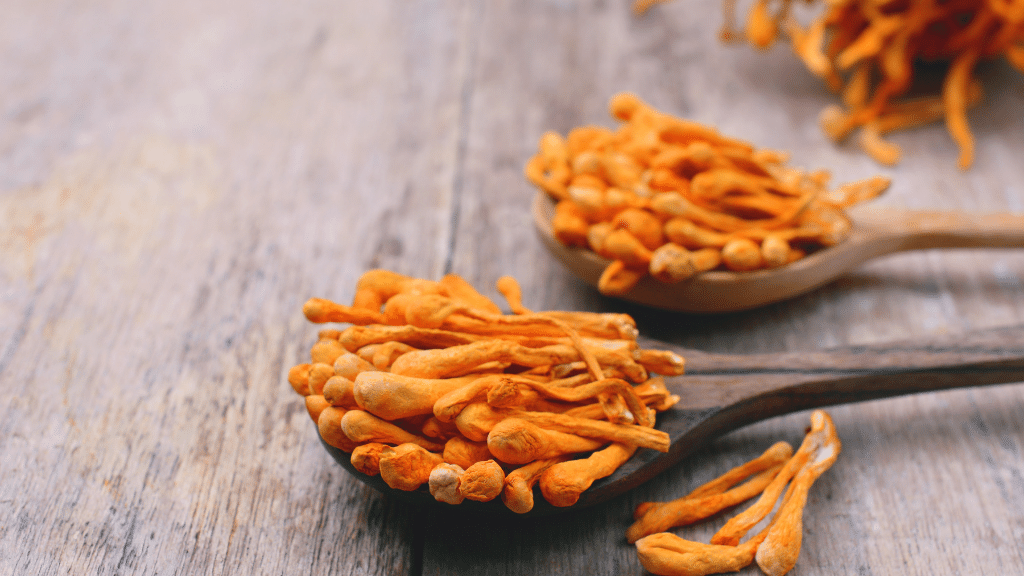
The makeup and benefits of cordyceps sinensis and militaris are similar, and we’ve highlighted their profiles:
|
Both varieties |
Cordyceps sinensis |
Cordyceps militaris |
|
|
|
Cordyceps are a wonderful type of mushroom with an abundance of health benefits that are still being studied. So although cordyceps sinensis is ghastly expensive, cordyceps militaris offers the same benefits for a minute fraction of the cost. Make sure to be aware of the quality of the product before purchase so you can fully reap the benefits of this wonderful mushroom.
If you'd like to learn more about cordyceps, see how it stacks up against another popular mushroom strain, chaga.

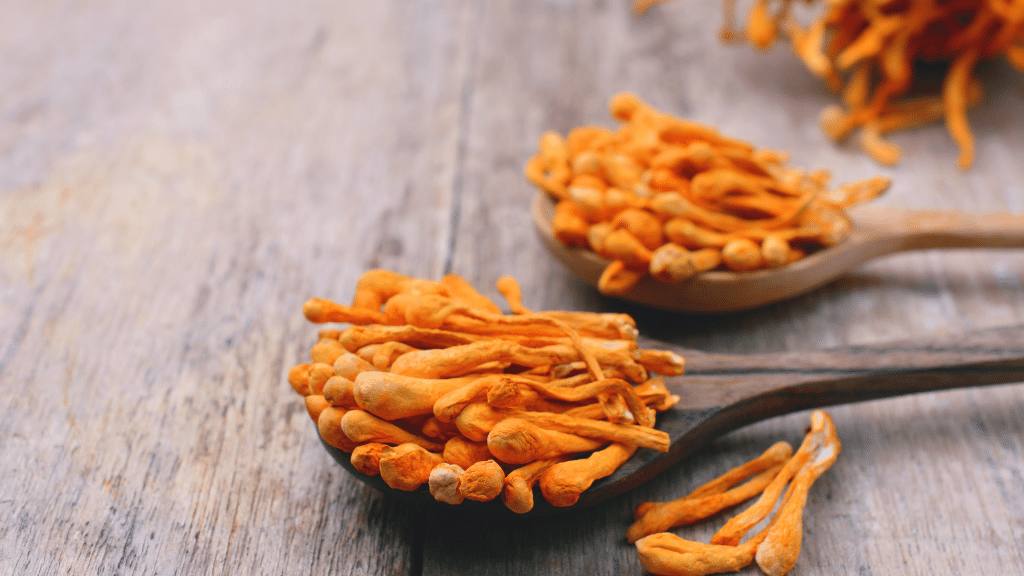
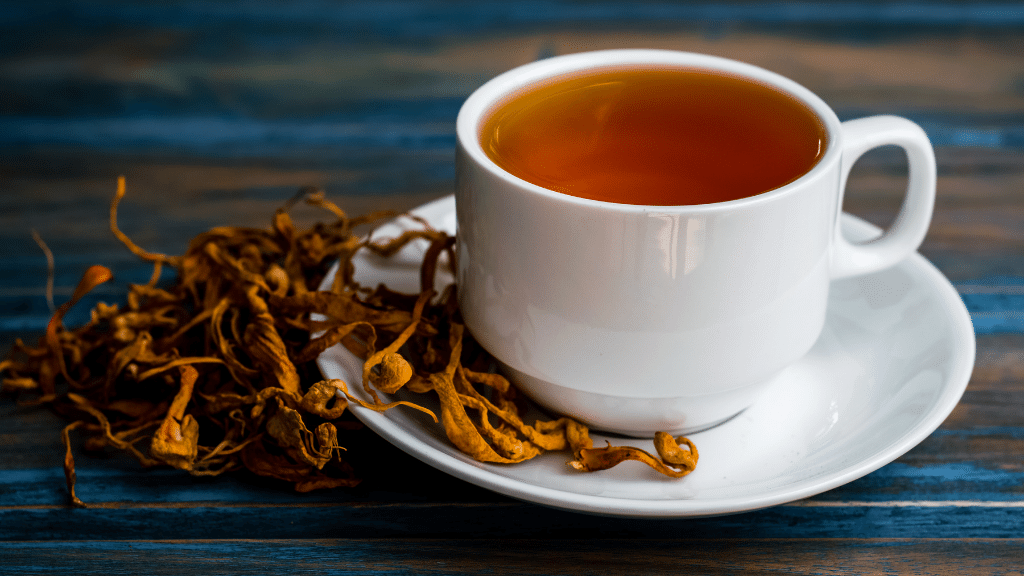


.png)
